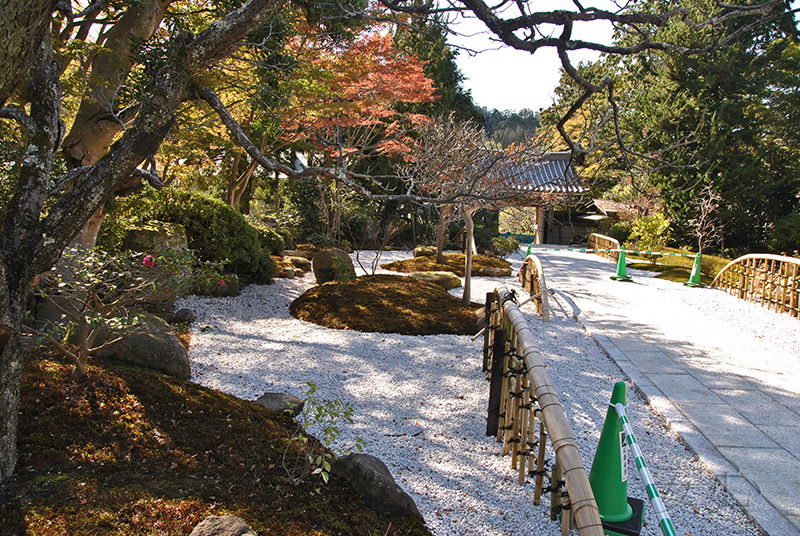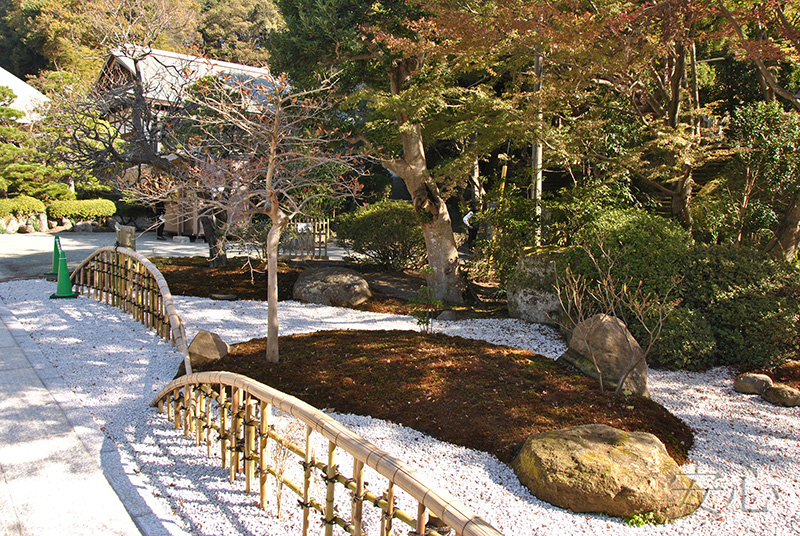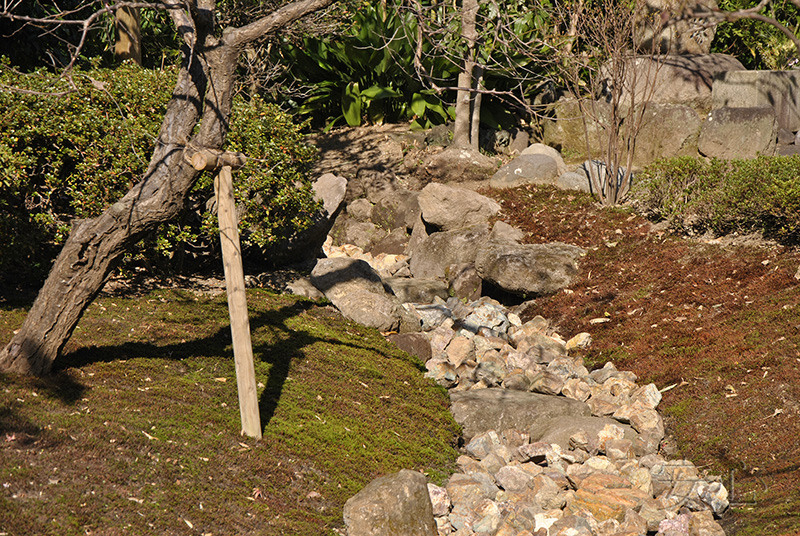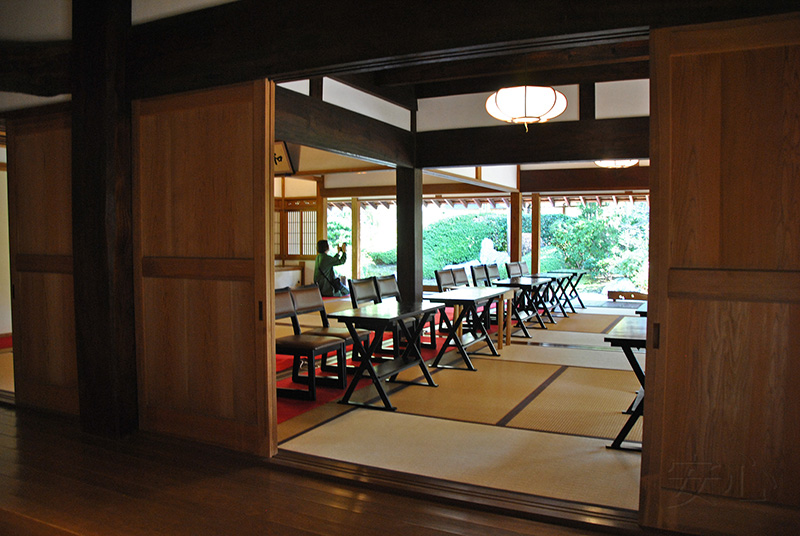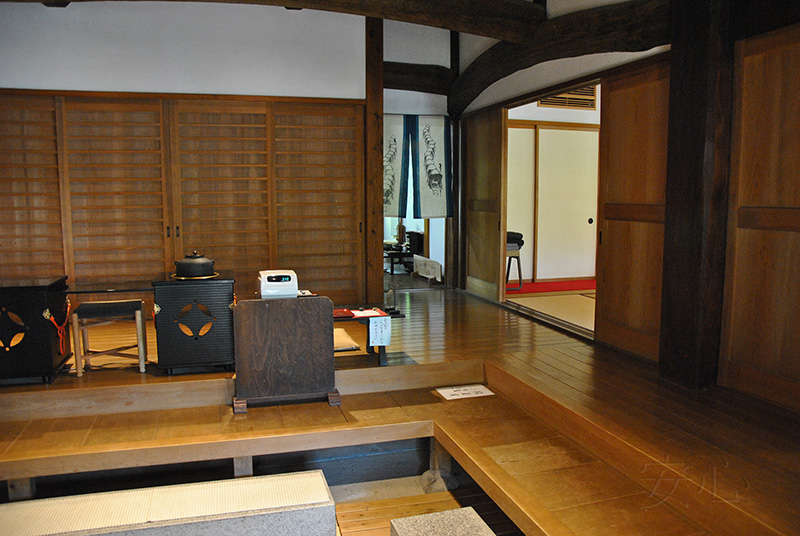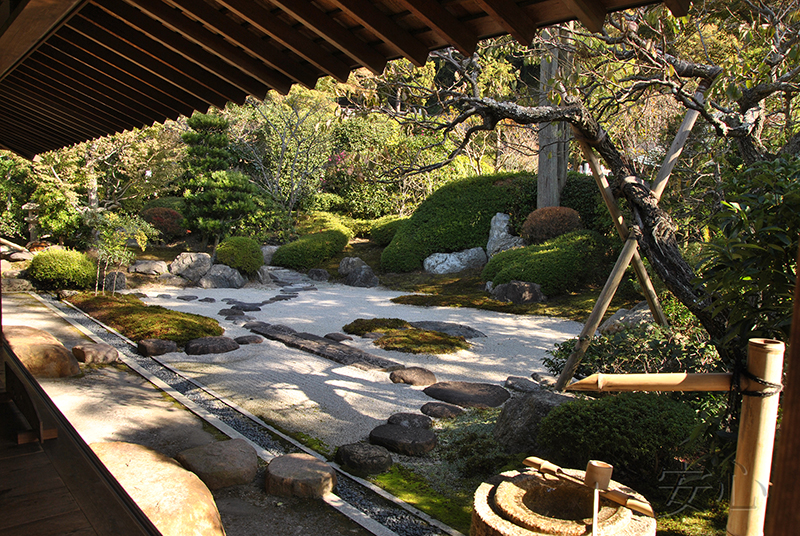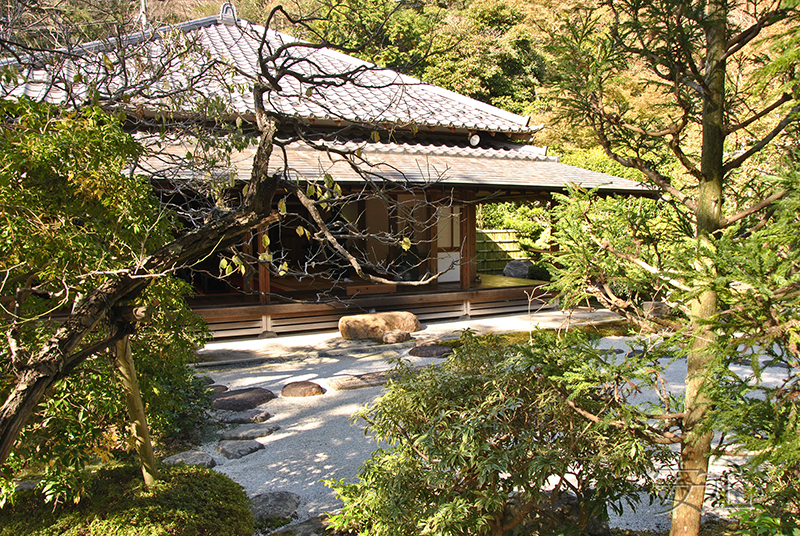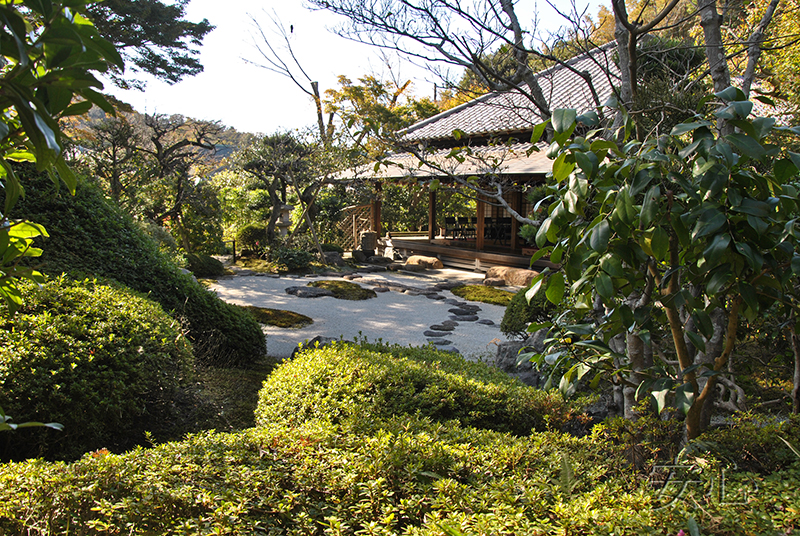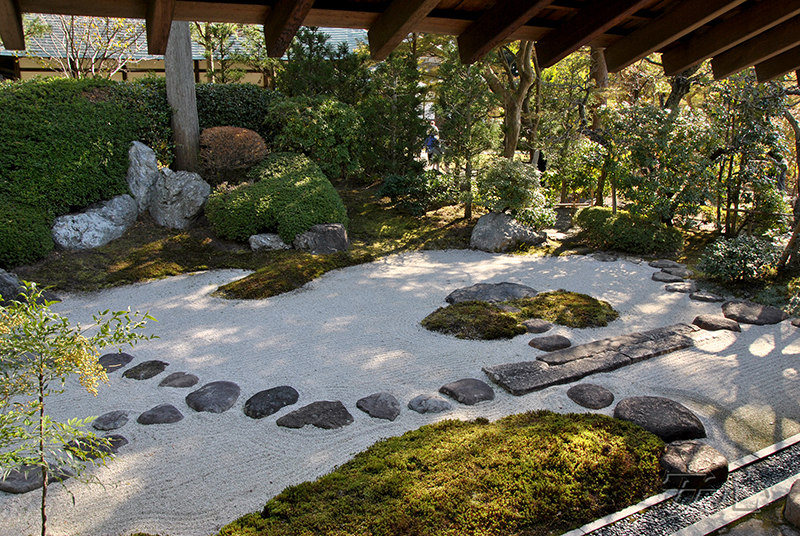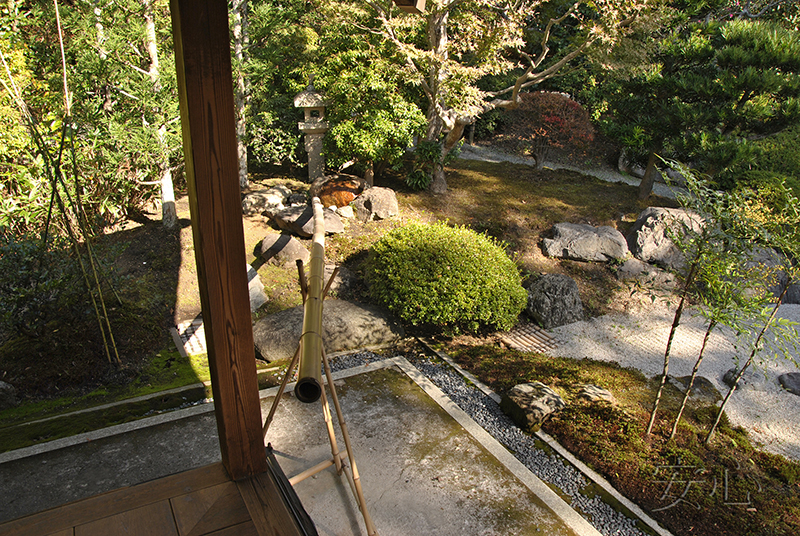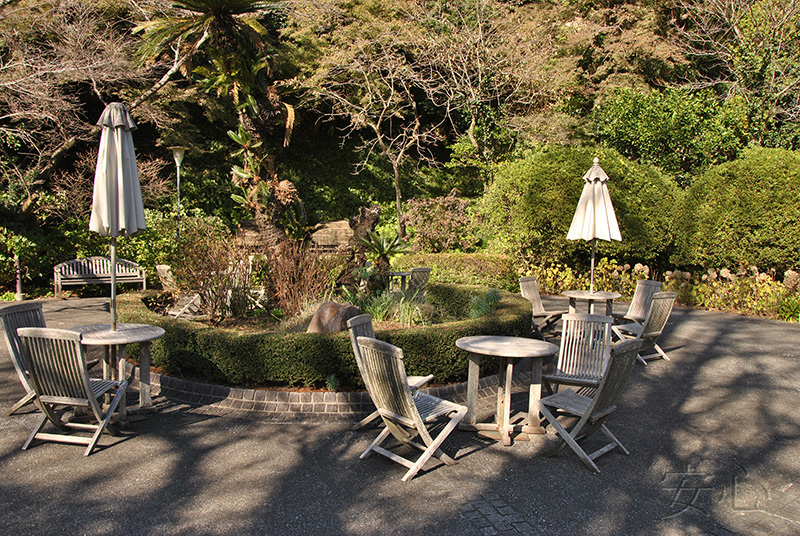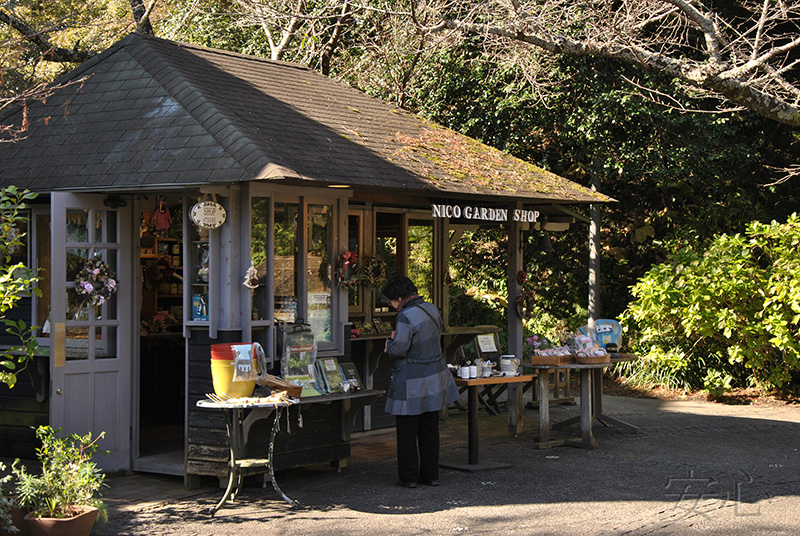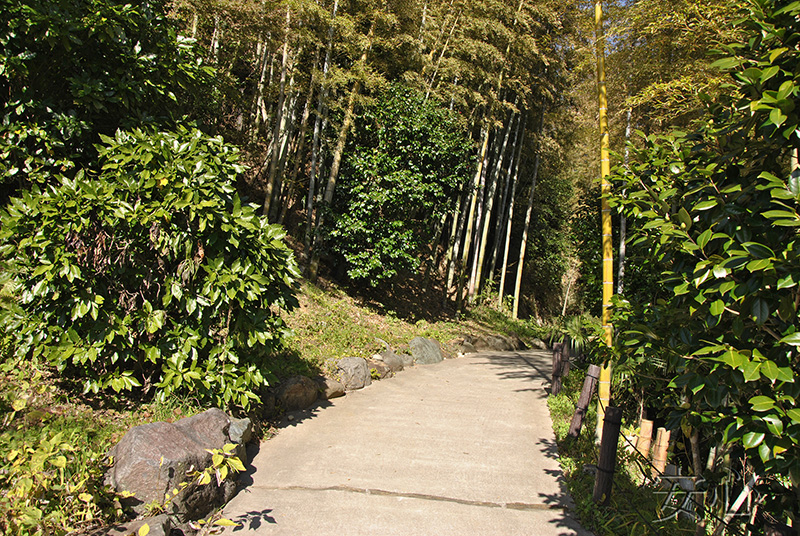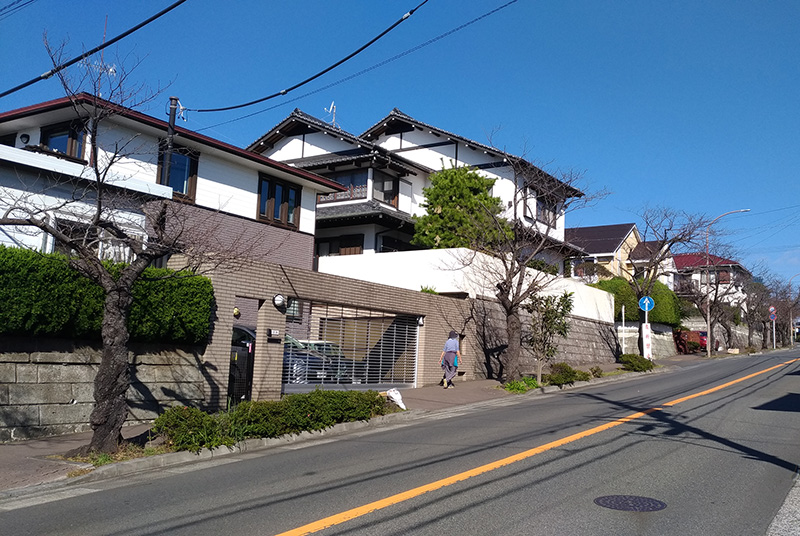
Jomyo-ji Temple Garden, Kamakura
Jomyoji is a temple of the Rinzaishu Kenchoji Sect, it is ranked fifth among the five great Zen temples of Kamakura. Once it was very large, the temple included seven buildings and 23 pagodas. However, many of them were destroyed by fire.
The temple was built by the famous samurai Ashikaga Yoshikane in 1188. The founding priest of the temple was Taiko Gyoyu. He studied Shingon Tantric Buddhism and then switched to Rinzai Zen Buddhism. At first Jomyoji was a Tantric Buddhist temple, but later, when Geppo Ryonen became the head priest, he transformed it into a Zen temple, changing the name “Tokasan” to Jomyoji.
At present, very little buildings remains of the temple. So, we can see the Sanmon Gate. True, on the day of our visit, the approach to the gate was blocked. But it was possible to watch in detail the front garten, which for some reason is not mentioned anywhere. On one side of the road is a dry garden with islands.
On the other side of the road the dry garden continues, but behind the hill, in a deepening, there is an unusual dry stream. It seemed unusual to me that rather rough stones were used in this stream. But they give to the dry stream a wild character.
The stream originates from a low dry waterfall.
The main hall of the temple, built in the yosei-zukuri style, has also survived. Its roof was originally thatched, but now it has been replaced with copper.
Perhaps the most interesting thing for me in the temple was the Kisen-an tea pavilion with an adjoining dry garden. In fact, this is a reconstruction of a building, built in the 16th century, where priests gathered for tea ceremonies.
The pavilion itself is quite large, inside there are tables and chairs, that is, you can sit in a European style. Here they drink matcha tea with sweets and admire the beautiful garden.
The dry garden was opened recently, in the summer of 1991. Its author is the renowned garden designer Sone Saburo. The compositional center is a small area covered with light rancked sand, symbolizing water and waves. This lake is surrounded by hills planted with plants so that the people sitting in the tea pavilion cannot see almost anything outside the garden.
Although, in fact, visitors are walking on the road along the garden borders. They also cannot see the garden, except some points from where these photographs were taken. But for this case you need to go a little deeper to the side of the road.
In addition to the hills surrounding the garden, there are small islets covered with moss in the dry lake. Unusual is the fact that there is a stepping stone path in the lake, giving the illusion of being able to get closer to some places. However, going down of the tea pavilion is not allowed.
There is a tsukubai with a high chozubachi to the right of the pavilion.
And to the left there is the water-musical device suikinkutsu. You can read about it in more detail in my article "Water devices in Japanese gardens". To hear the magic sounds, you need to lean your ear against a long bamboo chute.
A ring road outside the garden leads to the restored mansion converted into the Ishigama Garden Terrace cafe. Here you can taste Ishigama baked bread, as well as dishes using vegetables and herbs of Kamakura period from the English garden located in front of the cafe. There is also a souvenir shop.
Further, the road leads us through a bamboo grove.
It is believed there is an ancient cemetery with the grave of Ashikaga Sadauji, who financed the construction of the temple. He also helped in getting temple the high status of one of the five main Kamakura temples that ruled the Kanto region.
His son, Ashikaga Tadayoshi, a general and close associate of Takauji, the first shogun of Muromachi is also buried here.
But we didn't find the cemetery, we saw only cave graves, the same ones what I wrote about in the article "Meigetsu-in temple". Perhaps one of those mentioned above is buried here. Unfortunately, the sign was only in Japanese. At least the flowers in the bamboo stems are suggestive of burials.
The Jomyoji Temple territory itself is not very large, but it is worth visiting, first of all, because of the beautiful gardens. Getting the temple is very easy, there is bus number 4 from Kamakura station. But you can also walk around 30 minutes. If you have a free day, visit other temples with gardens located nearby. We also visited Ichijo-Ekan-Sanso Garden, Hokoku-ji Bamboo Garden, and Zusen-ji Temple in one day. It turned out to be not particularly tiring, but full of vivid impressions day.
Garden Information:
Address: 3-8-31, Jomyoji, Kamakura-shi 248-0003, JAPAN
Opening hours: from 9 a.m. to 4.30 p.m.
anshin©2011All rights reserved. When using the materials of the site, reference is obligatory.
Proposals for co-operation, as well as comments and suggestions on the site please send to the address: anshinsad@gmail.comtel: +7 (965) 121-80-60, 10am-20pm
